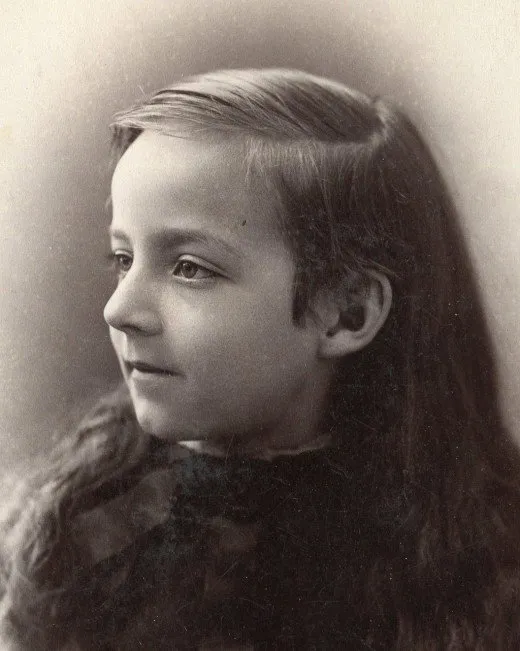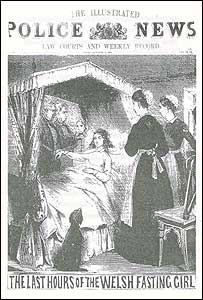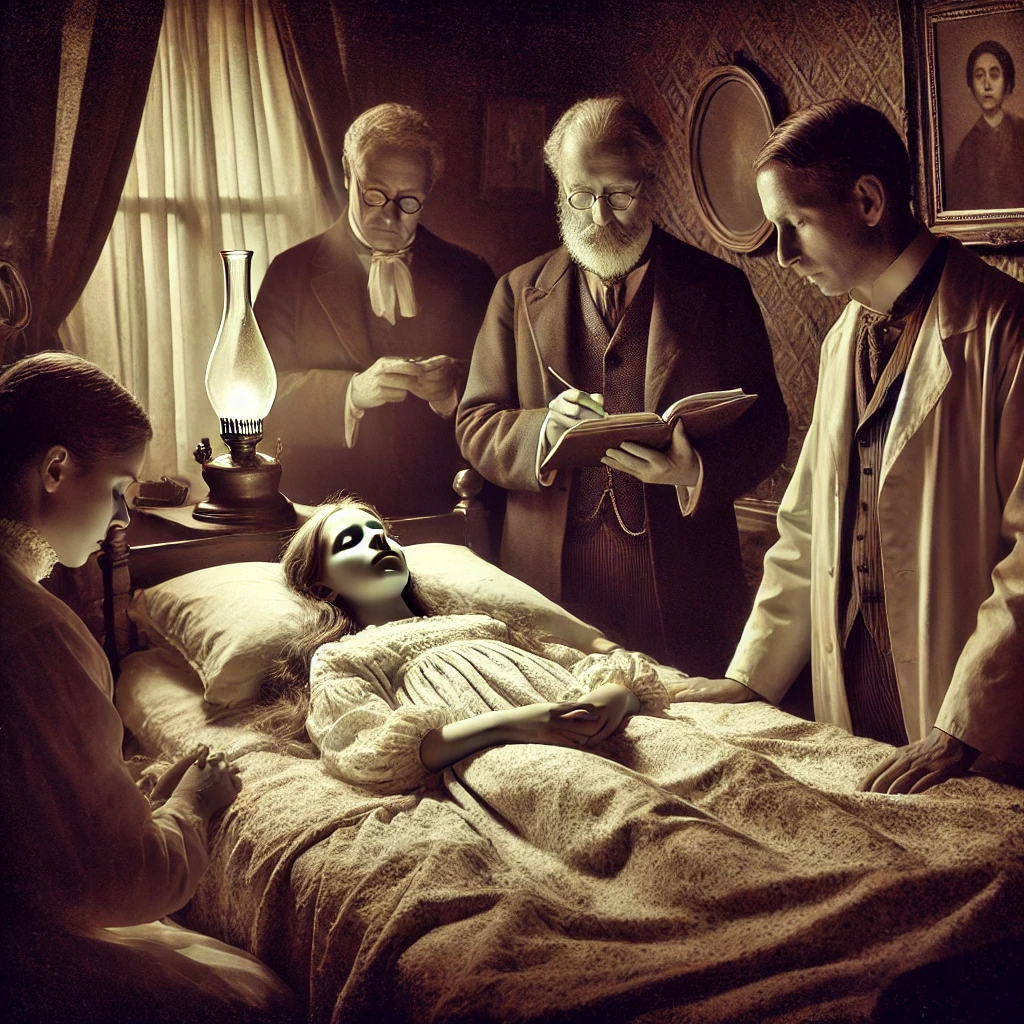In the 19th century, an unusual case captured the attention of the public and the scientific community: the story of Ellen Sadler, known as "The Sleeping Girl of Turville". This medical and social enigma remains a fascinating mystery to this day.
Who Was Ellen Sadler?
Ellen Sadler was born on May 15, 1859, in the village of Turville, Buckinghamshire, England. She grew up in a large, humble family, struggling with financial difficulties, as was common at the time.

The Beginning of the Mystery
 In 1871, at the age of 11, Ellen began experiencing extreme fatigue and weakness. After a few weeks, she fell into a deep sleep from which she would not wake for nine years.
In 1871, at the age of 11, Ellen began experiencing extreme fatigue and weakness. After a few weeks, she fell into a deep sleep from which she would not wake for nine years.
According to her mother’s account, Ellen became increasingly drowsy after returning home from the hospital in a rickety cart. In the following days, she suffered a series of convulsions, after which she remained motionless, lying on her side with her hand under her head and her legs slightly bent. It was in this position that her mother claimed to have seen her throughout the period of lethargy.
A journalist reported the mother's story about the night Ellen fell ill:
"The mother's narrative is that she told the little girl to pray, and that they prayed together—the child rocking herself to and from with her hands clasped, gradually losing command over herself and growing more and more convulsed, her eyes rolling wildly and her limbs twitching. When [Dr Hayman] arrived, to use her expression 'the child was fixen down.' That is to say, she had sunk into a state of insensibility, in which she now remains."
(Source: Wikipedia)
A Case That Caused a Sensation
The story of Ellen Sadler quickly gained fame. Doctors and journalists traveled to Turville to study the case, but no one could explain the phenomenon. According to her mother, Ellen remained completely motionless, unable to eat on her own. She was fed small amounts of liquids and nutrients, sometimes through the spout of a small teapot.
no one could explain the phenomenon. According to her mother, Ellen remained completely motionless, unable to eat on her own. She was fed small amounts of liquids and nutrients, sometimes through the spout of a small teapot.
The story became so popular that the family received donations from people intrigued or moved by the situation. Many visitors even paid to see the girl, and some took locks of her hair as souvenirs—until the supply ran out. Ellen became a true local attraction, with her bed transformed almost into a shrine for curious pilgrims.
A journalist from the Bucks Free Press, who visited Ellen, described her body as warm and her hands flexible, but noted that her legs and feet were as cold as those of a corpse. His report highlighted a disturbing contradiction: while her torso seemed alive, her extremities were like those of a dead person.
A reporter from the Daily Telegraph visited her about 22 months after the onset of her illness and wrote that, despite the appearance of a deep sleep, Ellen’s face was not skeletal but had a slight color on her cheeks. Her eyes remained closed with no reaction to external stimuli, even when her eyelids were lifted or her cornea was touched. The report emphasized the strangeness of her breathing, so weak it was almost imperceptible, and the softness of her skin, which seemed too alive for a girl who had not moved for years.
"The girl's face is by no means cadaverous. There is flesh on the cheeks, which have a pinkish tint, and there is some colour in the thin lips. The eyes are calmly closed, as though in healthy sleep. I ventured to raise one of the lids and touch the eye beneath ... but there was not even a quivering of the eyelash. ... The girl's [hand] was quite warm and moist, and the finger nails were neatly trimmed. The fingers are not the least bit stiffened ... It is not a skeleton hand, neither are any of the girl's limbs so emaciated as, under the extraordinary circumstances alleged, might be expected. ... The child's body is very thin as compared with her limbs. ... There is not much substance in her flesh, however; it is soft and flabby ... [Her feet were] almost ice-cold. ... As regards the child's breathing, it is so feeble that it is almost impossible to detect it; you cannot feel it by holding the cheek to her mouth, and the only faintest flutter is felt when the hand is laid over the region of the heart."
(Source: Wikipedia)
Skepticism and Doubts
Some doctors began to raise doubts about the authenticity of the case. The local physician, Dr. Hayman, visited Ellen multiple times and stated that he had never seen her in a different position. However, many wondered how a person could survive so long without movement or adequate nutrition.
Other details raised questions: it was said that Ellen had not had bowel movements for five years and that she only urinated every four days. However, these claims were never independently verified.
Ellen's Awakening
After nine years of sleep, Ellen suddenly woke up with no apparent explanation. However, the girl remembered nothing of the time spent in a lethargic state. Even after waking, her health remained fragile.
An Unsolved Mystery
To this day, the case of Ellen Sadler remains an enigma. Some researchers have suggested that she may have suffered from an extreme form of narcolepsy or Kleine-Levin syndrome (also known as "Sleeping Beauty Syndrome"), while others believe it was a psychological disorder or even an elaborate hoax.
The story of Ellen Sadler continues to fascinate and intrigue historians and medical experts. Was she truly a victim of an unknown condition, or was it one of the greatest deceptions of the 19th century? The truth may never be discovered, leaving the mystery of Turville shrouded in legend.
Sources and Further Reading:








Leave a Comment